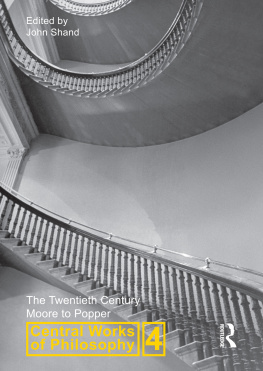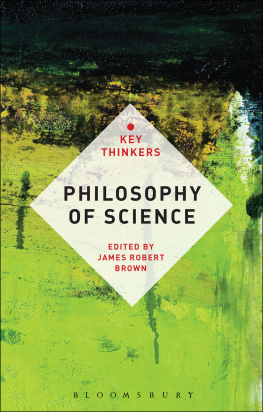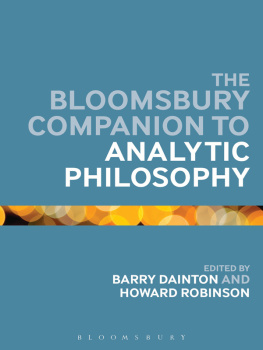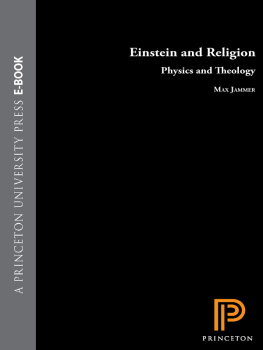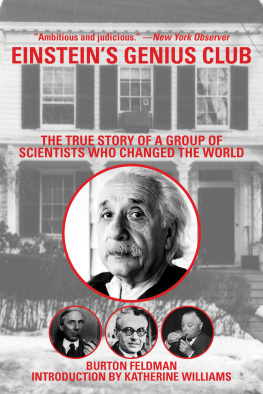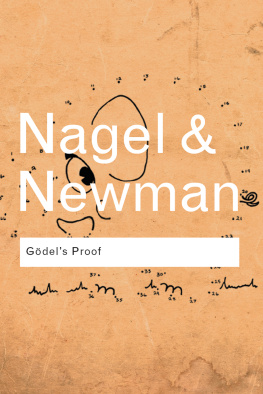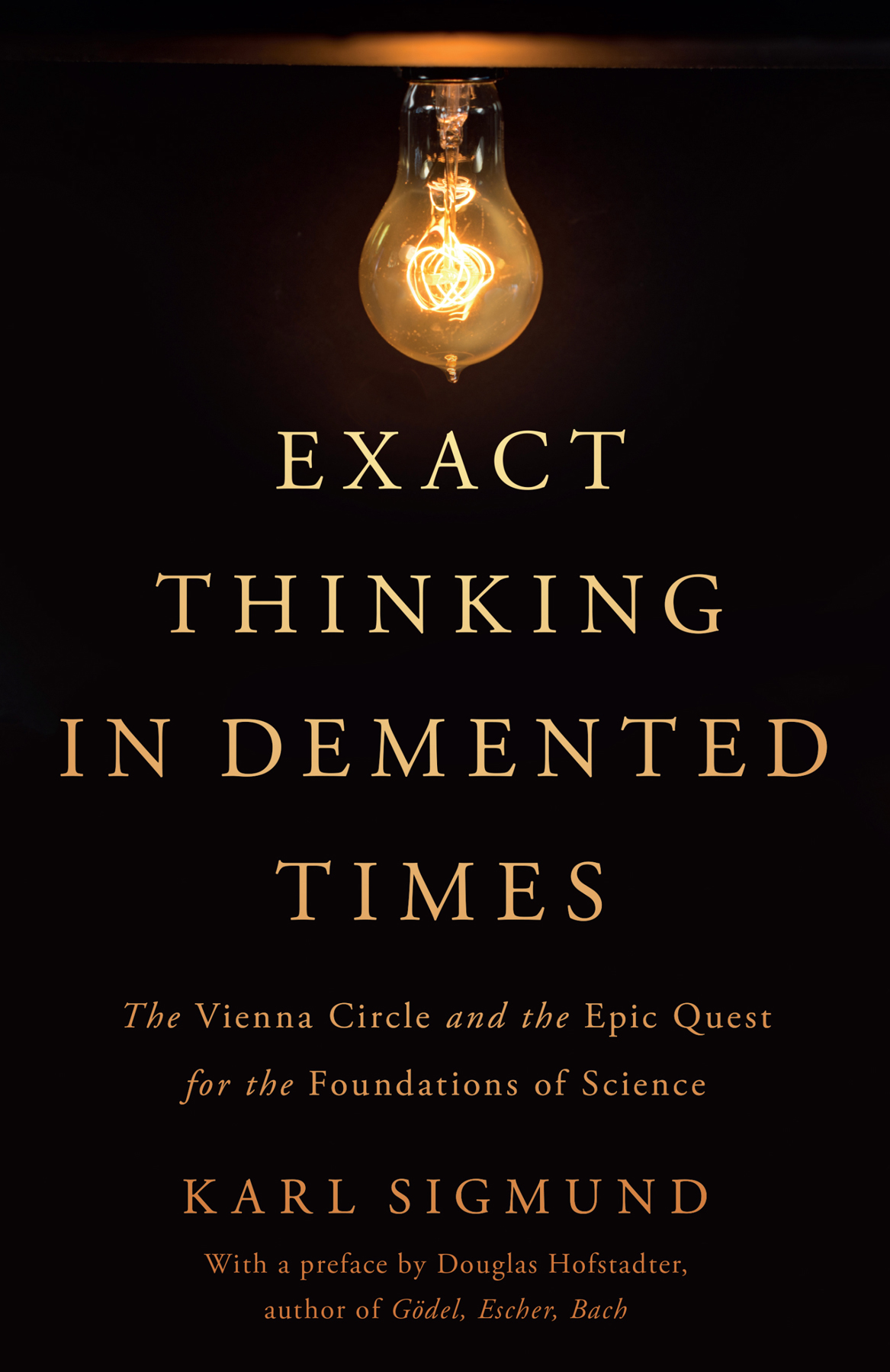O NE EVENING IN THE EARLY FALL OF 1959, WHILE I WAS BROWSING at random in Keplers bookstore in Menlo Park, I stumbled across a slim paperback book called Gdels Proof, co-written by Ernest Nagel and James R. Newman. Aged fourteen at the time, I had never heard of Gdel, but I liked the exotic dots floating above his name, and in my high school math class, I had recently become spellbound by the notion of mathematical proof, so my curiosity was piqued. Upon flipping through the books pages, I was quickly hooked. Here was a book about many things, including logic, the nature of mathematics, language and symbols, truth and falsity, proofs about provability, and perhaps best of all, paradoxes and self-referential statements. All these topics were amazingly alluring to me. I had to buy this book!
My father, a physics professor at Stanford, was with me that evening, and as we were paying for our purchases, he saw the cover of my book and told me with delight that he knew Ernest Nagel quite well. I was bowled over. In fact, he had taken a philosophy course from Nagel in New York City in the early 1930s, and they had become friends as a result, although it had been many years since they had seen each other. This friendship, so unexpected by me, was certainly a welcome confirmation of my book choice.
Unbeknownst to either of us, Ernest Nagel, who had long been a professor of philosophy at Columbia University, had just arrived at Stanford a couple of weeks earlier to spend a sabbatical year out west with his family. And not long thereafter, my father ran into his old friend on the Stanford campus by chance, and they had a happy reunion. One thing led to another, and pretty soon my father took me over to the Nagels rented house on the Stanford campus. There I met Ernest Nagel and his wife, Edith, who taught physics at the City College of New York, and their two sons, Sandy and Bobby, who were fascinated by math and science, as I was. Not only were all four Nagels sparkling intellects, but they were also among the kindest, warmest people I had ever met in my life. There was an immediate resonance among us all, and thus began a lifelong friendship.
During that wonderful year, Ernest told me many stories about interesting characters whom he had met in Europe and the United States, such as Rudolf Carnap, Moritz Schlick, Carl Hempel, and others. And in my frequent browsings at Keplers bookstore, I kept on running into books by various people Ernest had mentioned to me. One of my favorites was Introduction to Mathematical Thinking by Friedrich Waismann, from which I learned a great deal.
First through Ernests stories and then through books, I learned about the Vienna Circle and the ambitious philosophical movement that it launched, called logical positivism. This group of roughly a dozen people, who were fascinated by issues of philosophy, linguistics, physics, mathematics, logic, social reform, education, architecture, and communication, had the idealistic goal of forging a great unification of human knowledge. They were working on this grandiose plan during a period of tremendous economic and political upheaval in Austria and Germanyright between the two world wars. That was a tough time to be thinking idealistic thoughts!
I will always remember my extreme curiosity, even exitement, when I espied the provocative series of paperbacks called the International Encyclopedia of Unified Science on the shelves at Keplers. As I browsed through these volumes, I got the clear impression that the greatest questions of all time were being answered at this moment in history by deep thinkers who had once belonged to the now-defunct Vienna Circle and by their close colleagues.
When I was fifteen, I spotted Rudolf Carnaps The Logical Syntax of Language in one of my favorite bookstores, the Princeton U-Store, and snapped it up (for $1.15). This book, filled to the brim with long, mysterious-looking formulas using exotic fonts, oozing with references to Gdel, Hilbert, Tarski, Frege, Russell, and others, and featuring lengthy discussions of languages, metalanguages, proof schemas, syntactical antinomies, and so on, practically set my young brain on fire. Why? Because at that tender age, I had gotten fully caught up in the exciting notion that human thinking and pure deductive logic were one and the same thing. Even though Carnaps book was mostly opaque to me, it inspired in me indescribable feelings of depth. I was, after all, only fifteen.
Around that same time, I also ran into the mythical Ludwig Wittgenstein and his imposing-sounding Tractatus Logico-Philosophicus, his Brown Book and his Blue Book, and other volumes. These were praised to the skies by renowned authorities, such as Bertrand Russell. I had to check them out! At first I was intrigued by Wittgensteins pithy numbered sayings, but after trying hard to figure them out, I couldnt make a great deal of sense of them. Even so, I remained impressed; after all, so many people to whom I looked up seemed to think that they were works of great genius. However, after a while I started to be a bit more self-confident about my own opinions, and at some point, I grew skeptical of Wittgensteins oracular tone and cryptic phrasings. His sentences struck me more as pretentious obscurantism than as insightful clarity. Eventually I lost patience and decided that whether or not he had something important to say, his way of communicating was pretty orthogonal to my own, and so I dropped him like a hot potato.



